Alumni featured in SVA Galleries’ latest juried exhibition reflect on the challenges, lessons, and joys of sustaining an artistic practice.
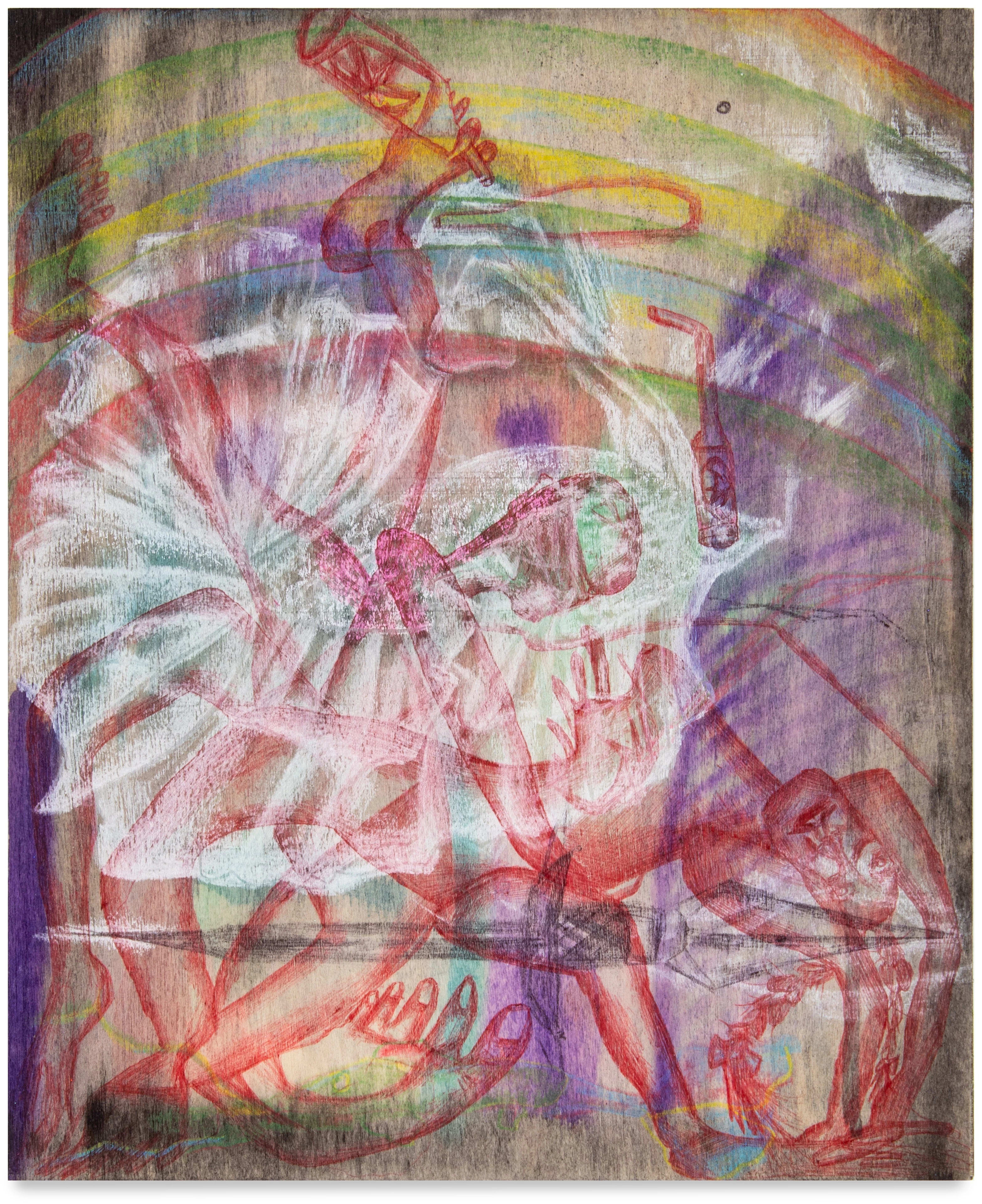
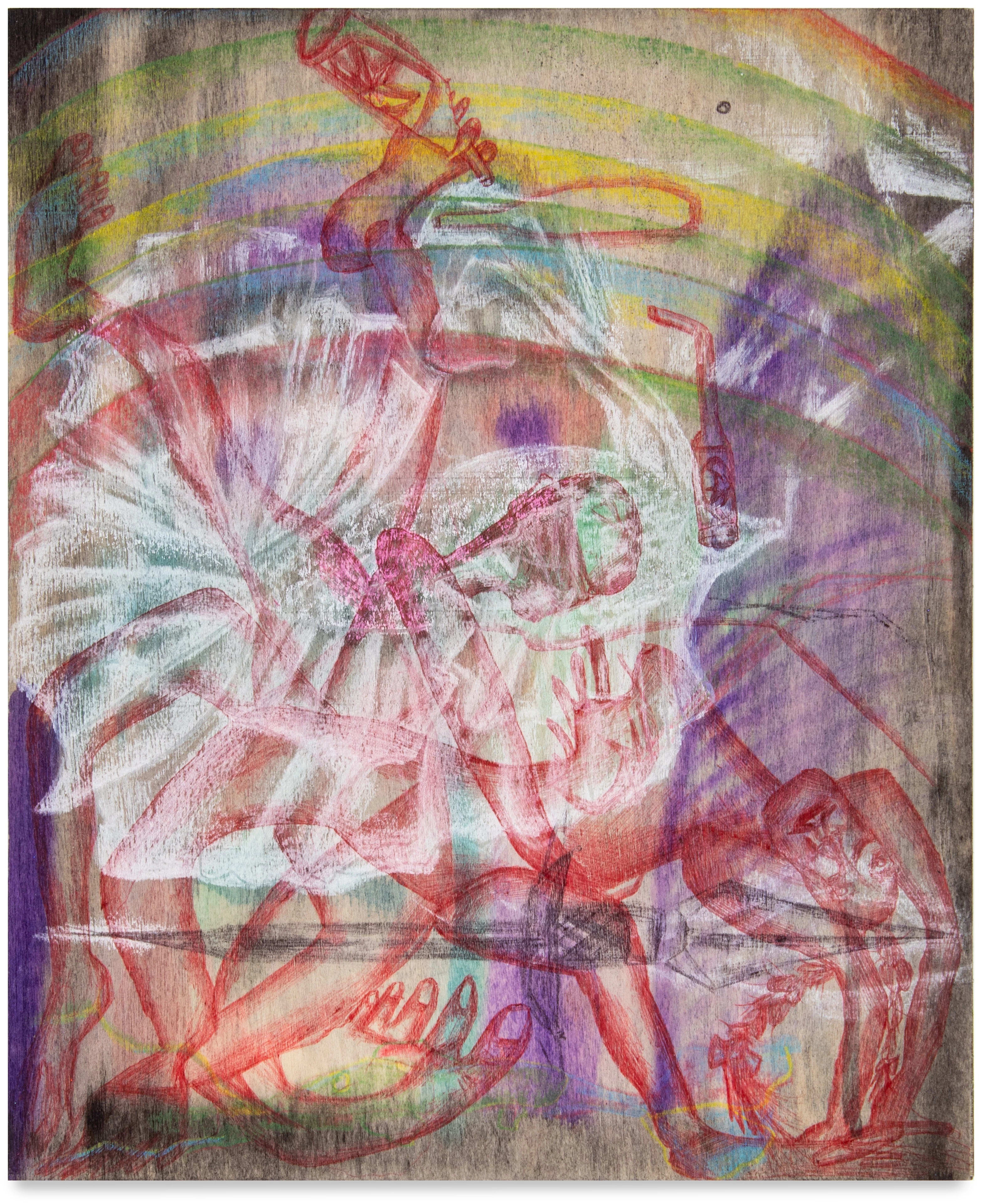
Gabrielle Benak (BFA 2019 Fine Arts), Help Me Do a Backbend 01, 2024, pencil and pen on wood panel, 12 x 9 inches. On view at “Wavelengths.”
Gabrielle Benak (BFA 2019 Fine Arts), Help Me Do a Backbend 01, 2024, pencil and pen on wood panel, 12 x 9 inches. On view at “Wavelengths.”
Fifteen SVA alumni convene in “Wavelengths,” a multi-disciplinary juried exhibition currently on view at the Chelsea Gallery through Saturday, December 6. Across sculpture, painting, illustration, installation, textiles, performance art, and more, these artists—all of whom graduated between 2010 and 2020 and established their practices in New York City—explore wide-ranging themes, including identity, self-care, gender, ritual, and, perhaps most crucially, joy amidst adversity.
Though the paths of SVA grads inevitably diverge after commencement, “Wavelengths” represents an opportunity for reunion and connection over shared roots of self-discovery at the College, made all the more meaningful by the jury of notable fellow alumni who selected their work. Below, five artists in the show reflect on their journeys from the classroom to the world of the professional artist.
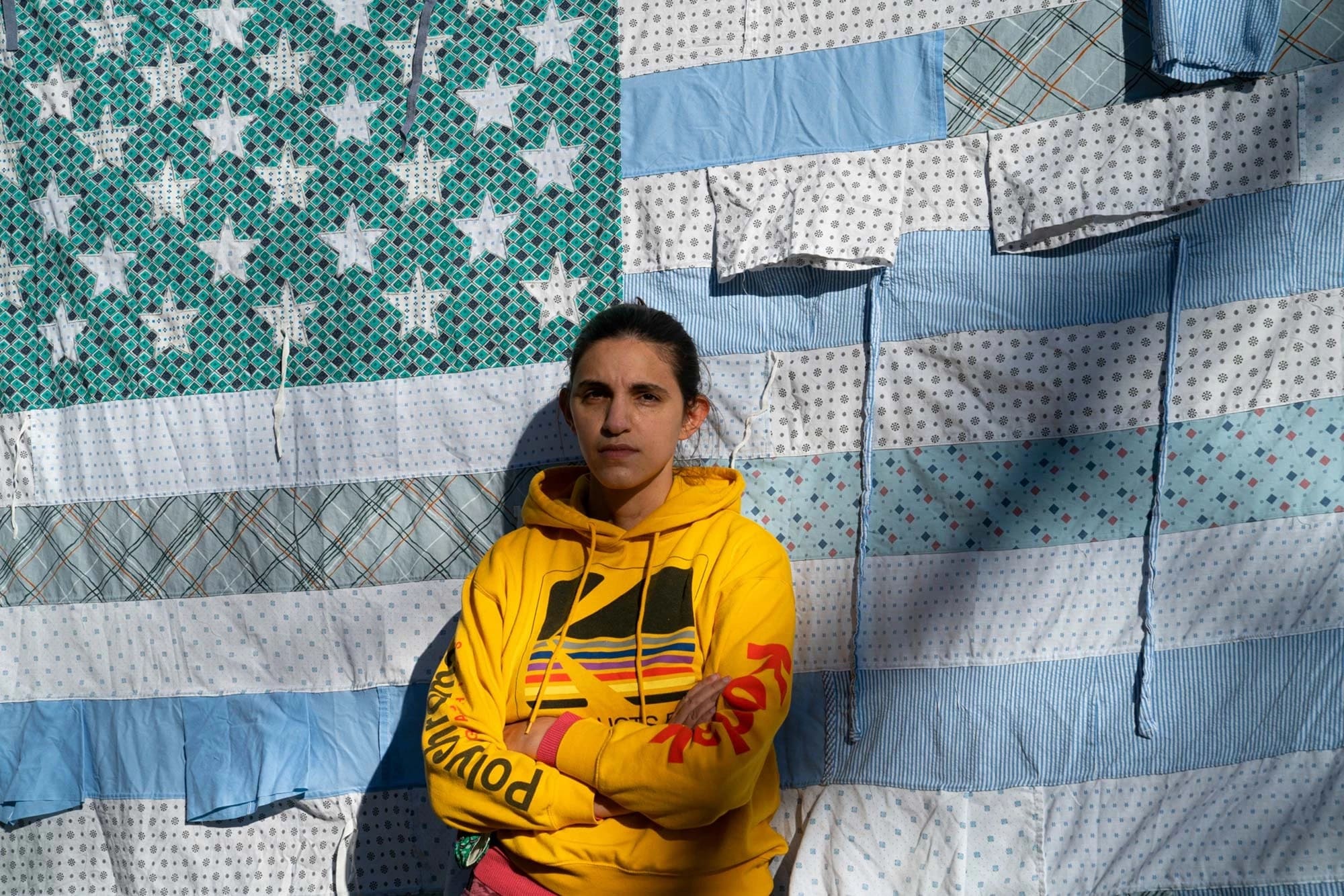
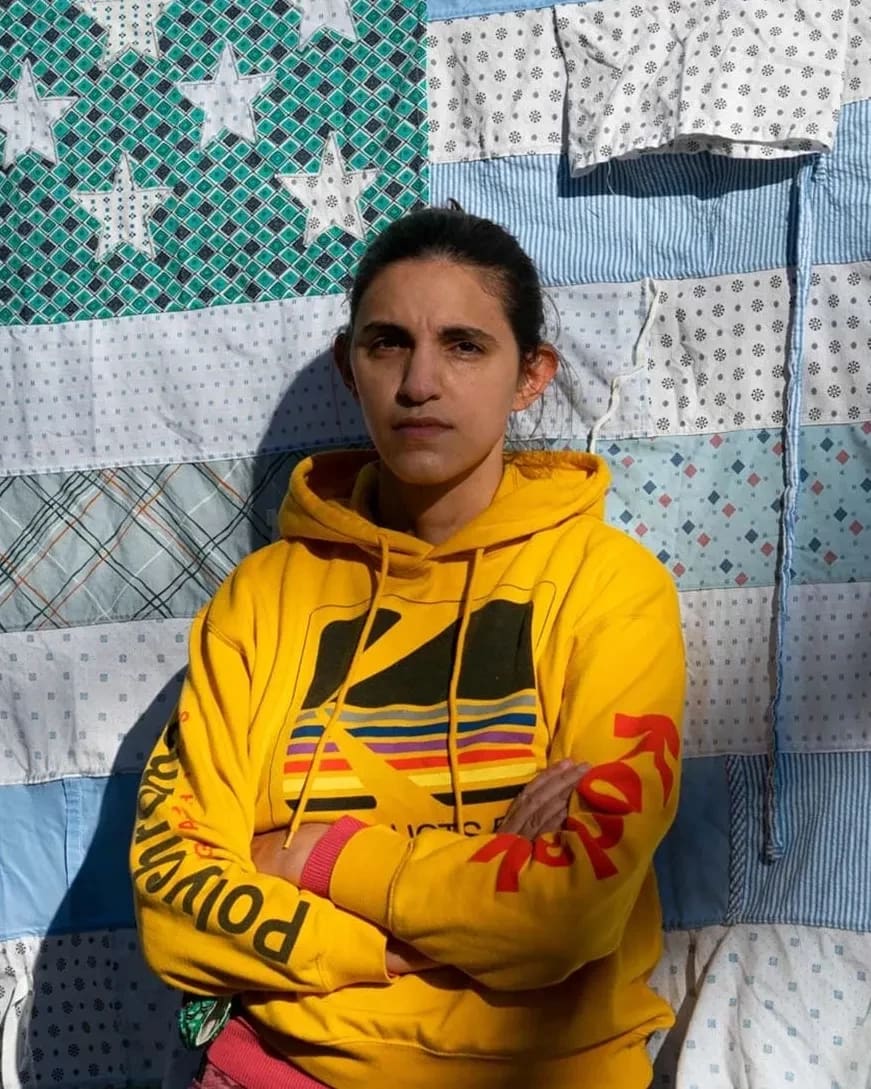
Georgia Lale (MFA 2016 Fine Arts), whose work is featured in the SVA Galleries exhibition “Wavelengths.”
Georgia Lale (MFA 2016 Fine Arts), whose work is featured in the SVA Galleries exhibition “Wavelengths.”
On misconceptions about being an artist in NYC and how they’re making it work:
Christine Stiver (MFA 2017, Art Practice): When I graduated from the low-residency MFA program at SVA, I was still living and working in Baltimore. The New York art world seemed impenetrable to me at that time, and I couldn’t imagine how I would ever get my foot in the door. A few years later, we moved to the city, and that impression didn’t immediately change, but over time, light started peeking through the cracks. New York is a huge city with nearly infinite art worlds. If you keep showing up and, more importantly, care about what other people are doing, the door will open. It turns out, what’s more difficult is figuring out which doors to walk through.
Gabrielle Benak (BFA 2019 Fine Arts): I am a teaching artist, and it is the closest I have felt to my original goal, being able to exist as an artist more holistically. There are imperfect aspects to any job, but after trying on so many other hats, you learn that everything is a give-and-take, and you must evaluate and prioritize within that spectrum. I am so happy to be among people teaching what I love and even find that it is enhancing my own art practice, which can now finally exist in the forefront.
Georgia Lale (MFA 2016 Fine Arts): I find that the SVA curriculum, especially the MFA Fine Arts program, puts a lot of focus on how to prepare the artist to perceive their studio practice as a small business, which involves how to promote yourself, how to write newsletters, how to do outreach, how to write your artist statement, your resume, how to archive your work. The skills I applied in my own practice, I made my work. Little by little, I began building a clientele of diverse artists who required those services. It works for me because, as a freelancer, I can make my own schedule and take breaks from work when I need to focus on my art or when I need to travel.
Paul Rho (BFA 2019 Photography and Video): Creating art doesn’t guarantee an income, and sustaining yourself often means finding other work. At one point, I had a full-time job and two or three part-time jobs just to make ends meet. During that time, I couldn’t make art for almost a year, and I began to fear that I might stop creating altogether. Eventually, I started carving out small pockets of time to work again. Little by little, I rebuilt my practice.
Alex Cassetti (BFA 2016 Photography and Video): It was a challenge to ask for guidance on how to move forward, as I had limited spaces to create and to exhibit. It takes a while for the work to succeed [and] to make sense, and for myself, to take risks.
On early career lessons they learned:
Christine Stiver: I learned from other artists that we actively create the art world we want to participate in. So, if you wish for a world where your ideas make sense, resonate, and matter to someone else, work toward building that world with others. Contribute in any way and in whatever capacity you can. This doesn’t require grand gestures; it can also mean visiting other artists’ studios and spending time with them in their world for a little while. This goes a long way in bridging gaps of isolation. Sitting idly by, waiting to be plucked out of obscurity for your genius, only works for a select few. Many of us show up for our people as much as we show up in the studio for ourselves.
Georgia Lale: Use your disadvantages and your limitations as your material. That’s also part of what makes the work unique and interesting. For example, if you don't have enough space, consider creating smaller works. If you work from your bedroom, use non-toxic materials. I know, sometimes we have ideas about our art and like big projects, but we cannot do them because we don't have the financial means, space, or time. We get stuck to it, and then we start resenting ourselves and society for not being able to reach our dreams and goals and express ourselves. For me, the most important thing is to keep creating art, whether small or big; it doesn't matter. The art will find its way.
Paul Rho: As an emerging artist, you have to keep putting yourself out there—applying for open calls, grants, residencies, exhibitions, and every opportunity you can find. It’s a long, exhausting process filled with rejection, but rejection doesn’t mean you’re a bad artist.
On what they wish people knew or understood better about being an artist in New York City in 2025:
Christine Stiver: You’re an artist even if you spend the majority of your time doing something else. It’s okay to figure out how to pay your bills and make art fit the circumstances of your very real and complicated days. That doesn’t make you less serious.
Gabrielle Benak: I wish people would regain patience to look at work or discover new artists. This is an age-old issue, but it's especially prevalent today, as we are inundated with content, images, and overall visual stimulation. We also live in an entrepreneurial hotbed, which is motivating but can also result in everyone trying to do everything, making it feel overwhelming.
Alex Cassetti: Having consistent studio time is only one part of being an artist… Try to go to as many gallery openings and screenings as possible. We are very fortunate to be surrounded by such amazing galleries.
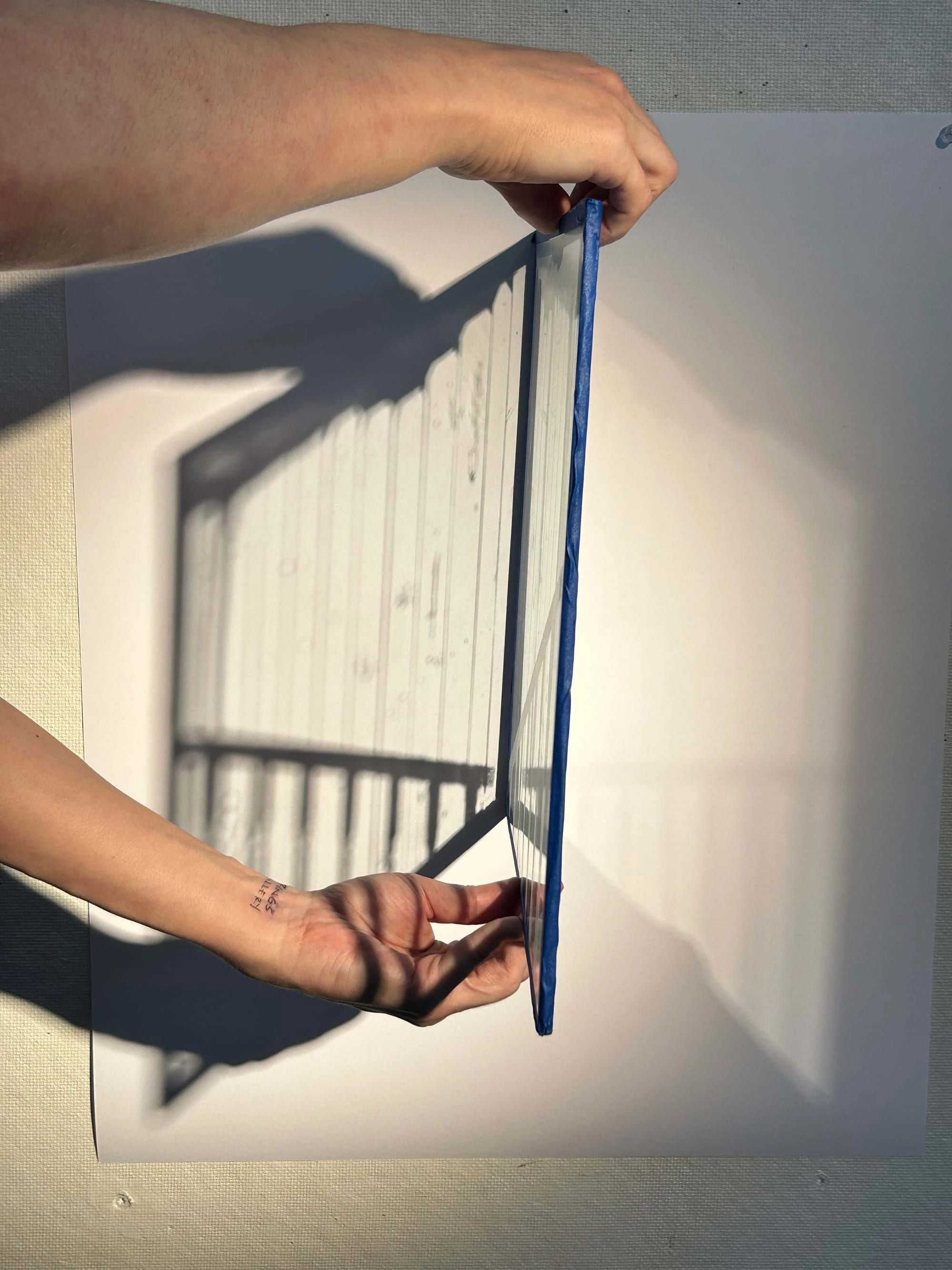
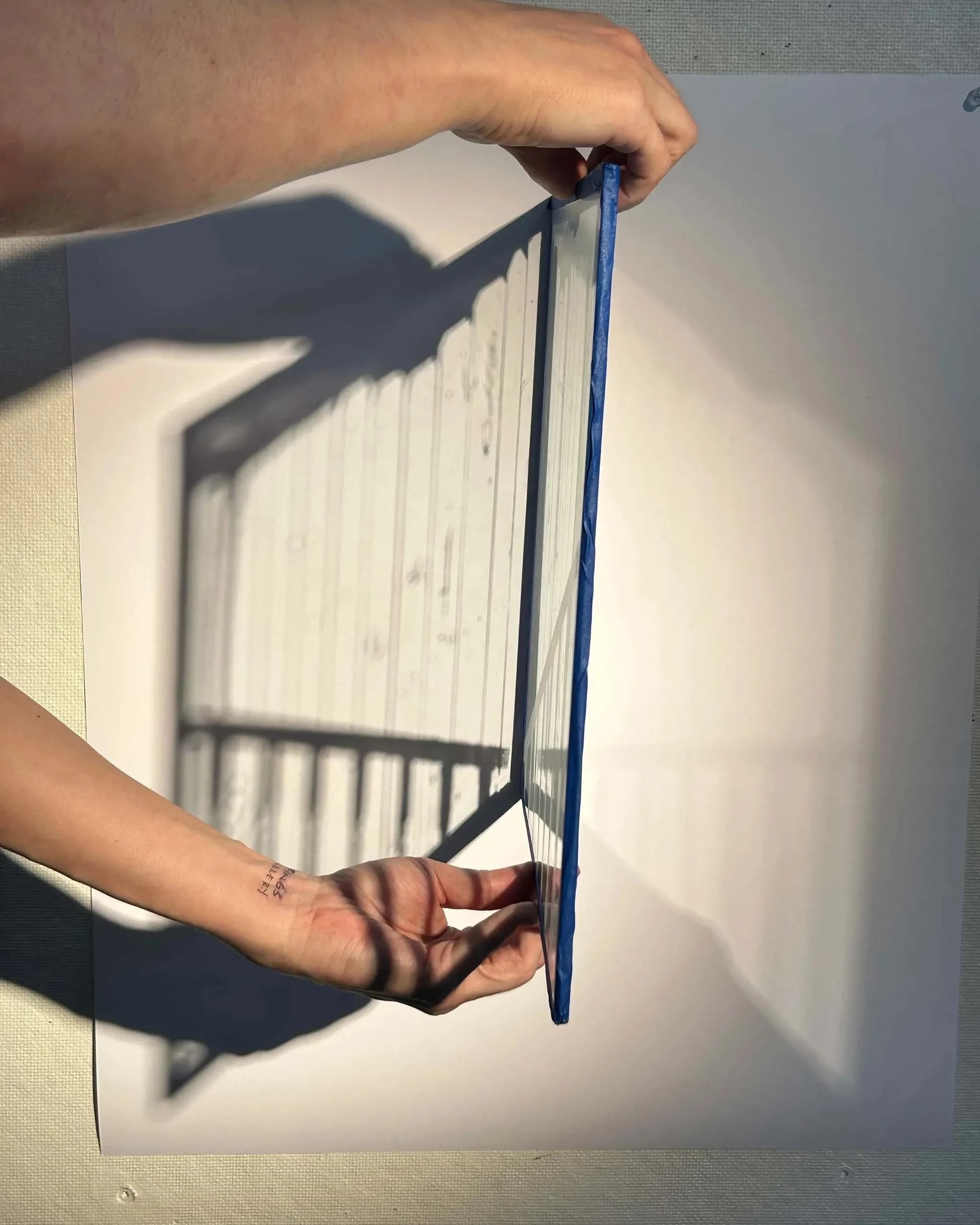
Alex Cassetti (BFA 2016 Photography and Video) at work in his studio. His work is featured in the exhibition “Wavelengths.”
Alex Cassetti (BFA 2016 Photography and Video) at work in his studio. His work is featured in the exhibition “Wavelengths.”
On the piece in “Wavelengths” that is most connected to what they were exploring while at SVA:
Christine Stiver: Although the work currently on view in the gallery differs in nearly every way from what I was creating at SVA, it carries the same obsessive, repetitive qualities that my earlier practice embraced. What truly links the two, though, is that this body of work wouldn’t exist without the many failed experiments I explored while in school. Yawn holds particular significance for me because it was the first piece in this series that felt like it struck a specific balance between tension, humor, and care. These are qualities I’ve always sought in my work, regardless of the material or method.
Gabrielle Benak: I Will Appreciate The Beauty Of A Flower, And Then Likewise, I Will Stand Exhibitionistic And Have The Flower Appreciate The Beauty Of Me, 2025. For my first open studios at SVA, I created an installation titled Self Worth/Self Worship. It touched on self-love and self-loathing, and how, through adornment, selfies, and validation, we try to hate ourselves a little less by surrounding ourselves with, well, ourselves. It’s like when you repeat the same phrase 100 times to memorize it. If I see my image enough, maybe after the 100th time, I will love it or learn to. “Fake it ’till you make it.” The piece in the show is a kind of nod to all these themes. It is interesting to reflect on the fact that as we grow, learn, and try, we can still struggle with themes from the past, even if they appear in a slightly different form in the present.
Georgia Lale: The work I have at the show, Americana, is an American flag made out of hospital gowns. I created my first flag piece while attending SVA. I enjoy working with flags and reappropriating them. The first flag I made was at SVA during my second year, where I created a European flag out of an emergency heat blanket given to refugees when they first arrived in Greece by boat. This blanket helps them raise their body temperature and stay dry. When I finished SVA, I started working with hospital gowns because I was diagnosed with cancer, and I had access to [them] and started using them mostly in performances. Performance was also a means of continuing to create art with limited resources.
Paul Rho: The work I was making then became the foundation for my current practice. I was exploring how a photograph could be transformed into a sculpture through analog processes. Since then, my methods and materials have evolved, but the core of my inquiry remains the same—I’m still fascinated by the transformation of photographic images into physical form.
Alex Cassetti: As a young photographer, I focused on capturing light and reflections in NYC and was advised by my professors to develop my work in that direction. At the time, I didn't know what they meant until I started creating installations with glass. Comfort of the Sun [is about] the relationship between photography, light, projection, and sculpture that I have been exploring since I was a student at SVA.
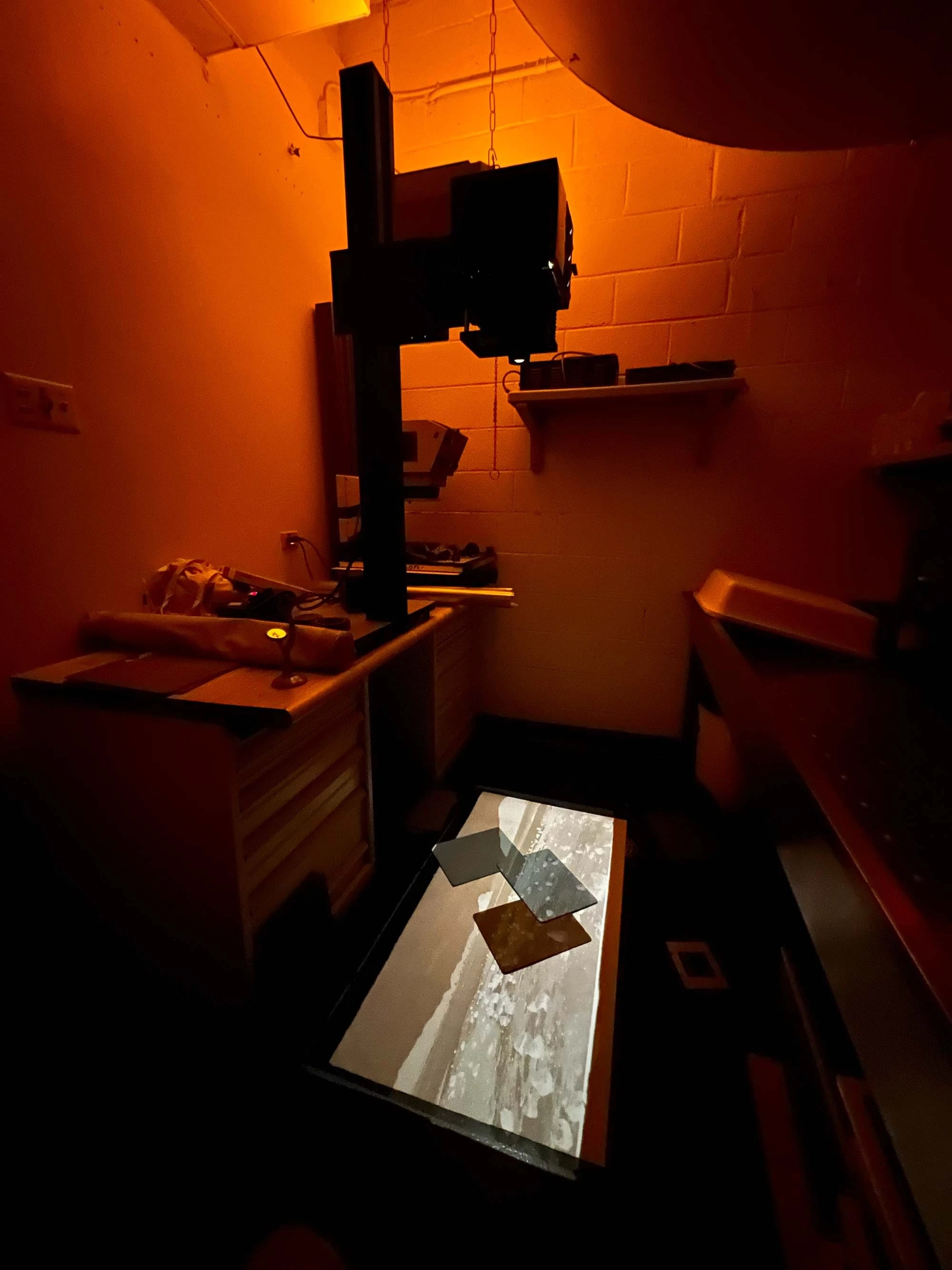
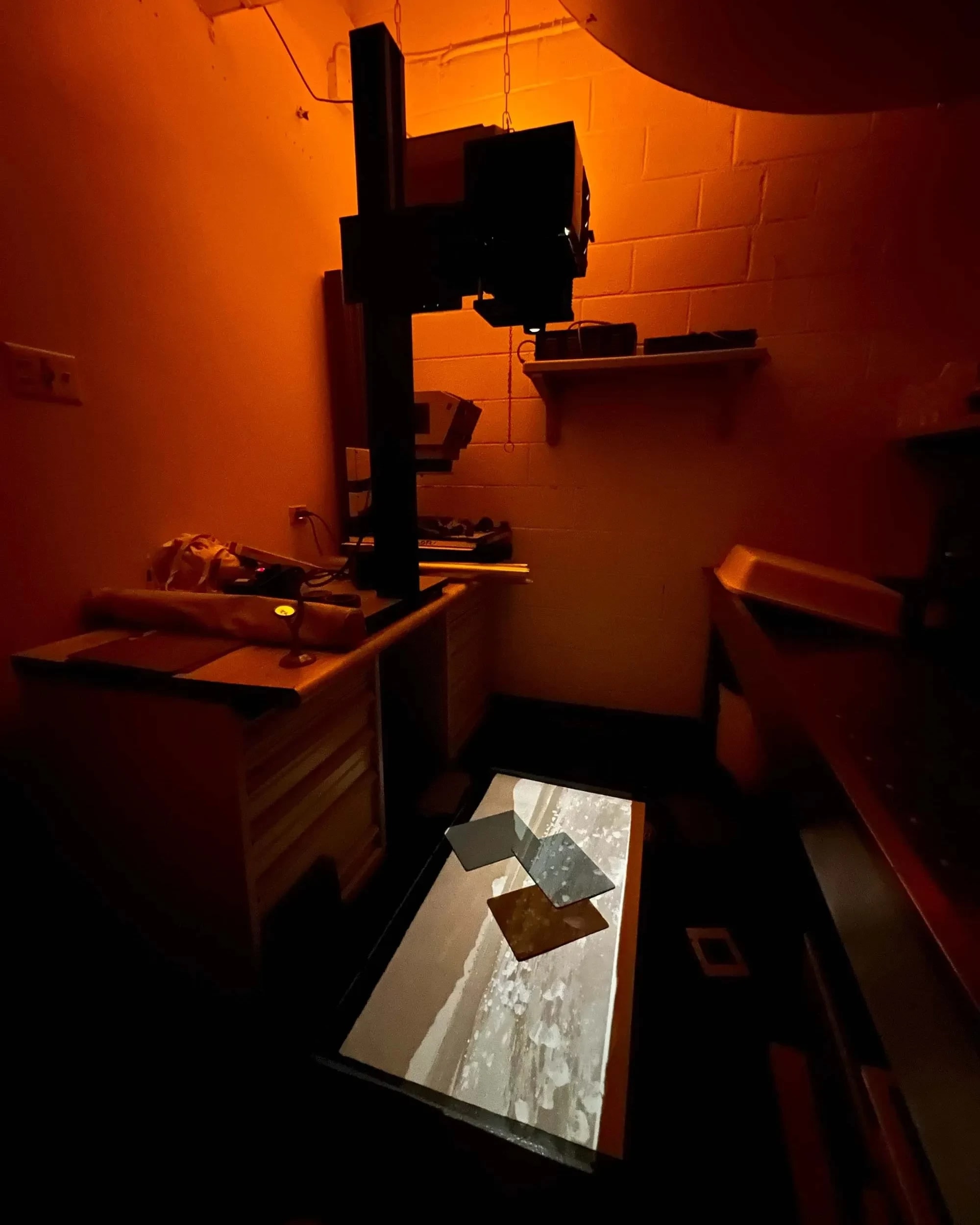
Paul Rho’s (BFA 2019 Photography and Video) photography dark room. His work is featured in the exhibition “Wavelengths.”
Paul Rho’s (BFA 2019 Photography and Video) photography dark room. His work is featured in the exhibition “Wavelengths.”
The advice they would offer soon-to-graduate artists:
Christine Stiver: A lot can be learned from unglamorous work. A job is a job; making art and living a creative life can be something else.
Gabrielle Benak: Nothing is permanent, and everything can be seen as a stepping stone for the next thing. Keep in touch with people from school as well. Many of my friends and colleagues today have been touched by SVA in some way.
Georgia Lale: Sometimes we encounter obstacles that seem extreme and overwhelming, and it feels like we cannot overcome them unless we compromise and stop creating art. But if that's really your calling, if you cannot live without being productive, just keep doing it, and things will fall into place.
Paul Rho: Start by finding a job that allows you to survive in the city, then set aside time to make your work, even if it’s just a little at a time. There will be difficult periods when things feel impossible, but don’t give up. Keep creating, stay connected to your peers, and trust that your persistence will lead you forward.
Alex Cassetti: Create works that you can easily store, and always create as much as you can. Writing and drawing are essential in my practice for fleshing out ideas, even when I am not present in a studio space.
Hear more from the artists in “Wavelengths” at a roundtable discussion event on Tuesday, November 11, 2025, at 6:00pm at the Chelsea Gallery, 601 West 26th Street, 15th floor. The gallery is open Tuesday through Saturday from 10:00am to 6:00pm and on Mondays by appointment, except for the Thanksgiving holiday. It is fully accessible by wheelchair.
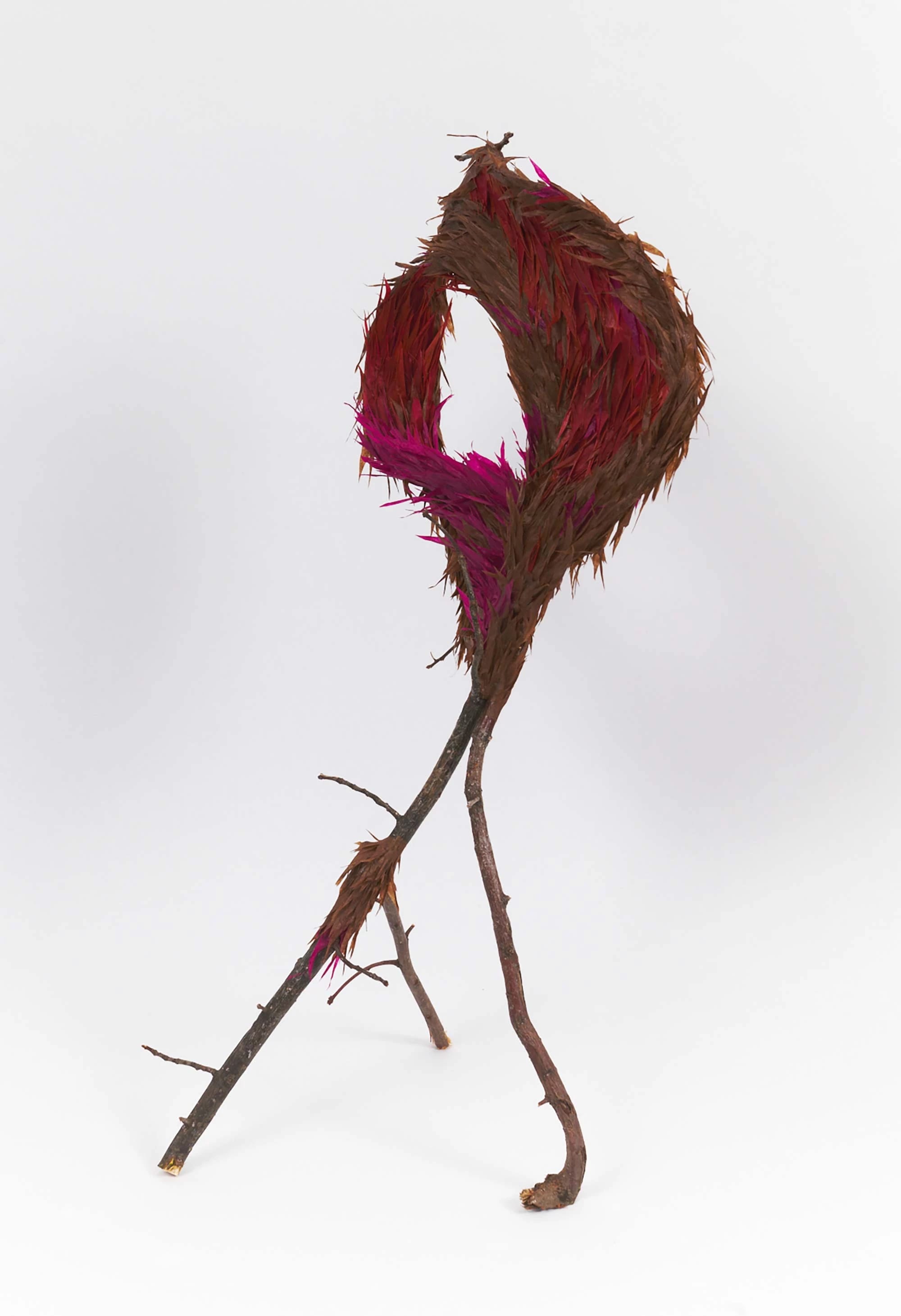
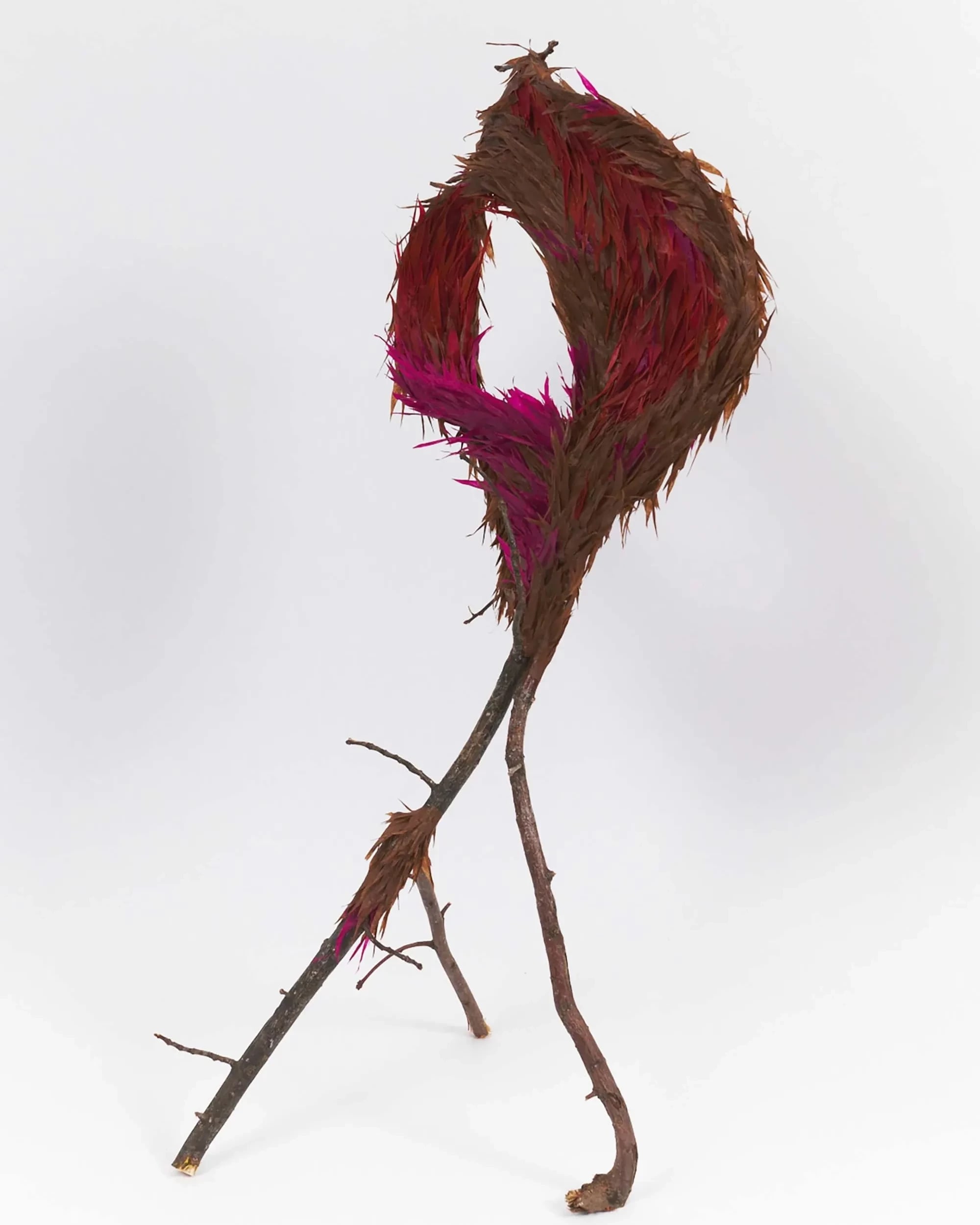
Christine Stiver (MFA 2017, Art Practice), Leaves and Feathers, 2023, sticks and paper, 21 x 10 x 11 inches. On view at “Wavelengths.”
Christine Stiver (MFA 2017, Art Practice), Leaves and Feathers, 2023, sticks and paper, 21 x 10 x 11 inches. On view at “Wavelengths.”

